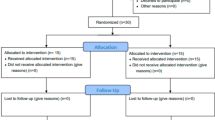Abstract
Benign paroxysmal positional vertigo (BPPV) is the most common peripheral vestibular disorder, accounting for 20% of all vertigo cases. Idiopathic BPPV is most common between the ages of 50 and 70, although the condition is found in all age groups. The importance of early diagnosis and treatment can lead to a much improved quality of life for patients afflicted by this ailment. It is presently common for physicians to treat these patients mainly with benzodiazepines, antihistamines, and anticholinergic medications, especially if the history and physical is consistent with BPPV. This method of treatment has had questionable success. Several reviews of the management of vertigo have shown that no medication in current use has well established curative or prophylactic value or is suitable for long-term treatment. Epleys manoeuvre is also used in the treatment of BPPV. This manoeuvre relocates free floating particles from the affected semi-circular canals back into utricle, thus relieving the symptoms of vertigo. The purpose of this study is to compare the efficacy of Epleys manoeuvre with conventional drug therapy versus conventional therapy alone in patients who present with vertigo. The purpose of this study to evaluate and examine two methods of treatment.
Similar content being viewed by others
References
Froehling DA, Bowen JM, Mohr DN, Brey RH, Beatty CW, Wollan PC et al (2000) The canalith repositioning procedure for the treatment of benign paroxysmal positional vertigo: a randomized controlled trial. Mayo Clin Proc 75(7):695–700
Hilton MP, Pinder DK (2004) The Epleys (canalith repositioning) manoeuvre for benign paroxysmal positional vertigo. Cochrane Database Syst Rev 2: CD003162. https://doi.org/10.1002/14651858
Parnes LS, Agrawal SK, Atlas J (2003) Diagnosis and management of benign paroxysmal positional vertigo (BPPV). Can Med Assoc J [serial online] 2003 Sep [cited 2013 Sep 18]; 169(7): 10–12. Available from: URL: http://www.ncbi.nlm.nih.gov/pmc/articles/PMC202288
Baloh RW, Honrubia V, Jacobson K (1987) Benign positional vertigo: clinical and oculographic features in 240 cases. Neurology 37(3):371–378
Bárány R (1921) Diagnose von Krankheitserscheinungen im Bereiche des Otolithenapparates. Acta Otolaryngol 2:434–437
Wang H, Yu D, Song N, Su K, Yin S (2013) Delayed diagnosis and treatment of benign paroxysmal positional vertigo associated with current practice. Eur Arch Otorhinolaryngol 271:261
Prokopakis E, Vlastos IM, Tsagournisakis M et al (2013) Canalith repositioning procedures among 965 patients with benign paroxysmal positional vertigo. Audiol Neurootol 18(2):83–88
Babac S, Arsović N (2012) Efficacy of Epley manoeuvre in treatment of benign paroxysmal positional vertigo of the posterior semicircular canal. Vojnosanit Pregl 69(8):669–674
Author information
Authors and Affiliations
Corresponding author
Ethics declarations
Conflict of interest
The authors declare that they have no conflict of interest.
Rights and permissions
About this article
Cite this article
Panuganti, A., Loka, S., Tati, S. et al. Comparative Study of Management of BPPV (Benign Paroxysmal Positional Vertigo) with only Drugs Versus Drugs Plus Epley Manoeuvre. Indian J Otolaryngol Head Neck Surg 71 (Suppl 2), 1183–1186 (2019). https://doi.org/10.1007/s12070-018-1255-1
Received:
Accepted:
Published:
Issue Date:
DOI: https://doi.org/10.1007/s12070-018-1255-1




